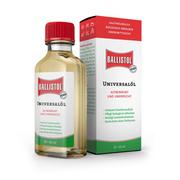Sharpening your garden tools
Good garden tools are worth their weight in gold, but only if you maintain them properly. By regularly cleaning and sharpening your garden tools, you will keep them in top condition and prevent unnecessary wear and tear. This overview tells you why maintenance is important, when to do it and how to do it. Want to learn more about specific tools? Below, you will find useful links to in-depth how-to guides on sharpening and maintenance for each tool.
Why is it so important to properly maintain your garden tools?
Garden tools see some heavy-duty use, and are often exposed to dirt, moisture and tree sap. Without maintenance, metal parts can rust, sharp parts can become dull and hinges might get stuck. Proper maintenance extends the lifespan of your tools and ensures that you work safely and efficiently.
When is maintenance necessary?
It's recommended to do a quick clean-up after any garden job. This prevents dirt from accumulating. More thorough maintenance, including sharpening and oiling, is especially necessary at the beginning or end of the garden season, after intensive jobs, or if you notice that your tools are becoming less sharp or move less smoothly.
Cleaning garden tools
Why is it so important to clean your garden tools?
Dirt, resin and rust affect your tools and make them less effective. Moreover, you can transfer diseases between plants if you don't keep your tools clean. Prevent this from happening and keep your tools ready for use by cleaning them well.
How do you clean garden tools?
- Remove soil and dirt with a dry cloth or brush.
- Remove grease with alcohol or a special cleaner in case of resin.
- Apply a thin layer of oil to metal parts to prevent rust. For example, use Ballistol.
- Use a maintenance oil for wooden handles to prevent wood from drying out.
Sharpening your garden tools
Sharpening garden tools is very important. This is because dull tools take more strength, work less precisely and increase the risk of accidents. Sharpening ensures sharpness, efficiency, safety and more fun.
When should you sharpen garden tools?
- Pruning tools: every few jobs or when cutting results are less than satisfactory
- Axes and saws: at the beginning of the season, after intensive use or in case of visible damage
How do you sharpen your garden tools?
Garden tools can be sharpened in two ways: either by moving the tool over the sharpening stone, or by moving the sharpening stone over the tool. In most cases, the latter method works best. This is because garden tools are often quite large, making it difficult to hold them steady while maintaining the correct sharpening angle.
Even with smaller tools like pruning shears, you usually choose the method where you move the sharpening stone. The construction of the tool often gets in the way if you sharpen using the other method. Therefore, a compact sharpening stone that is comfortable to hold is ideal for maintaining garden tools. This will give you maximum control over your movements and sharpen more accurately.
There are special sharpening stones for some tools that better match the shape of the blade. For example, do you have garden shears with a curved edge, like a parrot beak? Then a convex or concave sharpening stone, such as the Naniwa Gouken, will be ideal. For tools with a straight edge, a small sharpening stone, such as the Skerper Pocket Stone, will be perfect. For an axe, we recommend the Skerper Axe Sharpening Stone.
Saws are usually sharpened with a file or a special sharpening steel. Keep in mind that this is precision work: you have to sharpen each serration individually. This will take some time. This is why we also offer replacement saw blades for many of our saws. This is a quick and practical solution if sharpening is too much work.
What grit size should you use?
Garden tools generally don't need to be razor-sharp like a kitchen knife. A relatively coarse grit size (e.g. 200 to 400 grit) is often sufficient. This will quickly remove burrs and damage without endless sharpening. If necessary, use a slightly finer grit (600 to 800 grit) for a neater finish, but this is not a must for most garden work. Make sure you choose a sharpening product that is suitable for your garden tools. Small pruning shears are often difficult to sharpen on a large sharpening stone. Find out which sharpening products best suit your garden tools in the following articles.
























